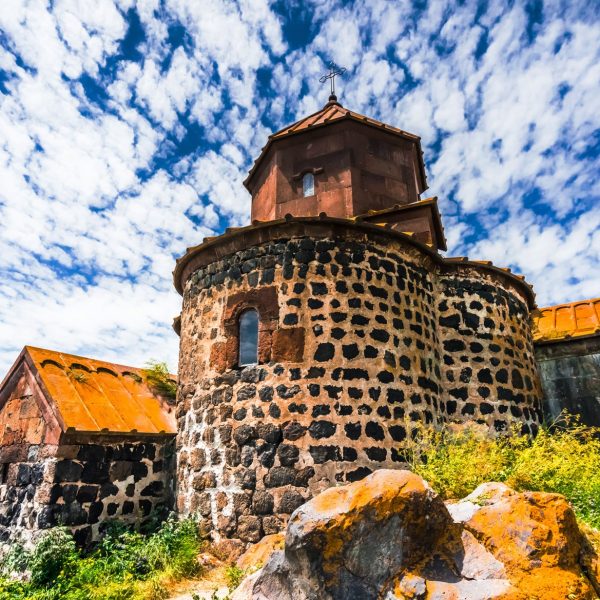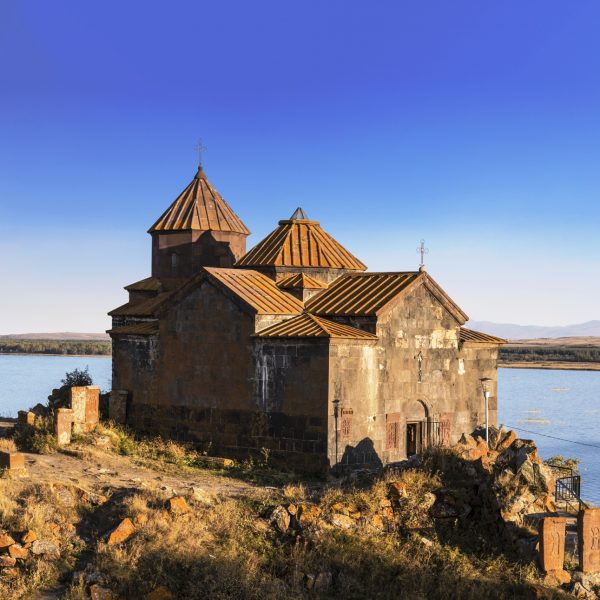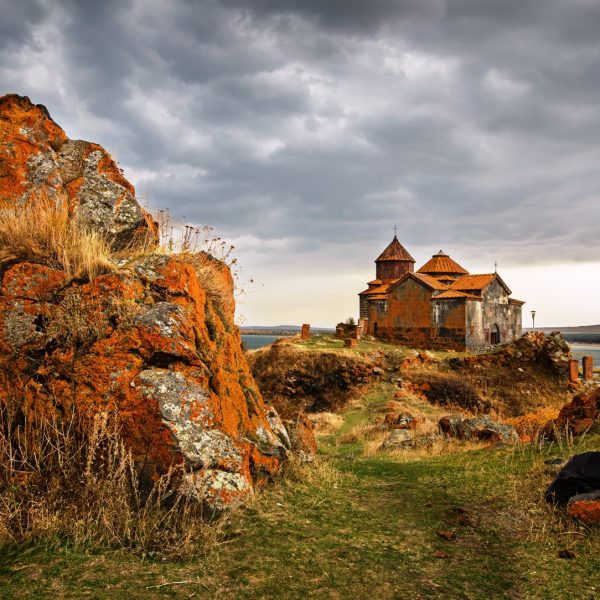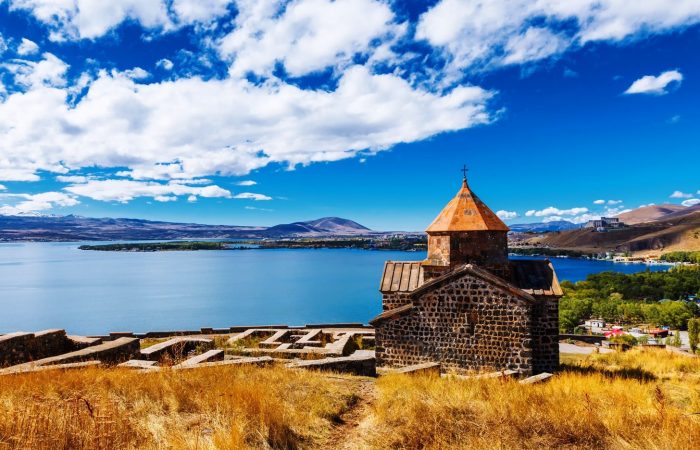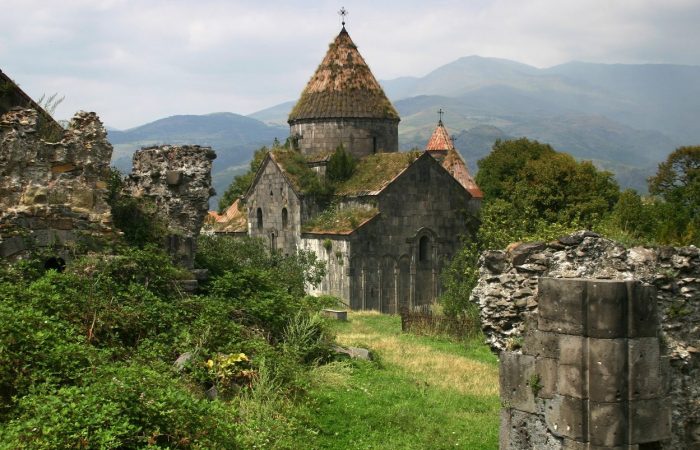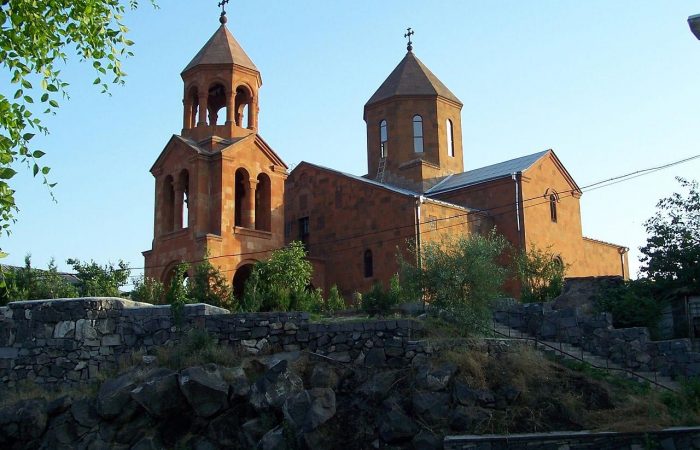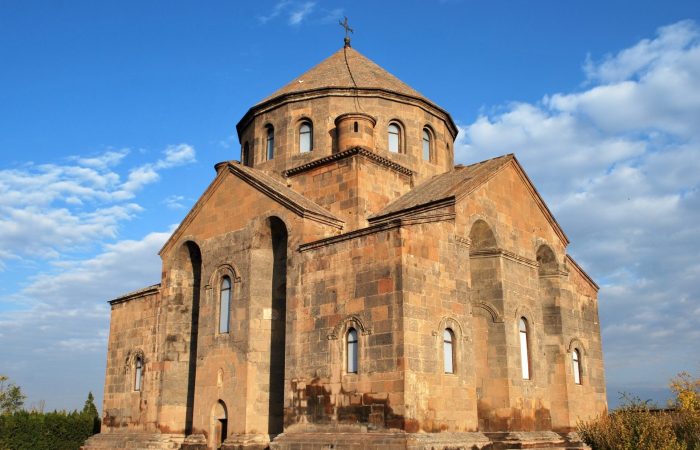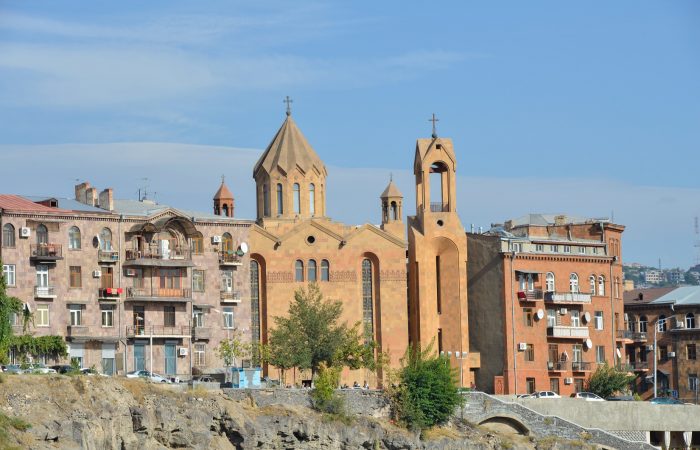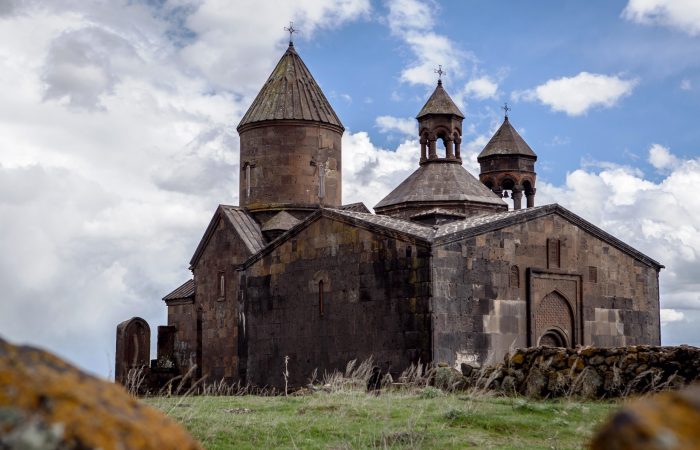Hayravank Monastery: Complex
The main church, called St. Stepanos is in the form of quatrefoil cruciform. It was built in the 9th century. The chapel was added in 10th century. The gavit was the last piece of the monastery, which was built in the 12th century, therefore, ending the construction of the monastery as a whole.
Over the course of history, the dome of the main church was almost entirely ruined. Restoration works made the church functional again. Some masonry covered the walls of the exterior making it quite different from the interior design.
The gavit can be reached through two portals from Western and Southern walls of the main church. The cupola bears the earliest samples of masonry, incorporating red and grey tuff. This style was later adopted by the majority of Armenian churches.
The oldest inscription of the monastery dates back to 1211 and tells about the first restoration works of the church. The latest look of the monastery, which is preserved till today, is left from the restorations conducted in 1980s. There are two entries into the church, from Southern and Western walls of the construction. Initially, there was only the Southern entry, the Western one was added much later.
The interior of the church is rather simple, but very thrilling when the sun hits the narrow windows of the church. The rays of the sun attack the interior, creating a thrilling sensation of holiness for every single visitor.
Hayravank Monastery: Legends
As a truly ancient church, Hayravank Monastery also has a legend connected to its name. This time Armenians were fighting against the infamous Turkic ruler Timur, who was conquering Armenia at that time. As he approached the monastery, he left nothing on his way but corpses and ruins. The priest serving at the monastery could not take the scene and threw himself off the cliff into Sevan. But he did not die. Instead, he ran on the surface of the water.
Timur was shocked by the scene and as a respect to such a divine act, he promised to make only one wish of the priest come true. The priest asked Timur to let the people of the village enter the church and he wouldn’t touch the people that the space inside the church could take. The church was very small, so Timur agreed, being sure that the priest won’t be able to save too many people.
So people started to enter the church. After some time there was nothing left outside. Timur got angry thinking that the priest was cheating. He rushed into the church and saw it completely empty. He also noticed how the priest transformed the last person into a dove, who flew from the church window. The priest’s name was Hovhan, and the church was named Hovhanavank, later becoming Hayravank (“Hayr” meaning “Father”).
Interestingly, the legend was written by His Holiness Ghazar A Jahkeci. According to him, the priest transformed his people into doves with the help of a relic of Christ’s cross, which was later moved to Sevanavank Monastery.
Another legend explains the alternative name of the church, Ayrivank (“Ayr” having the meaning of “cave”). According to it, the White Fortress is located 1km away from Hayravank Monastery. Despite the distance there was an underground tunnel connecting these two buildings.
Hayravank Monastery: Vardavar
Hayravank Monastery is a popular destination especially in summer, on Vardavar. Vardavar has its roots in pagan culture of Armenians. However, as Armenia adopted Christianity as a state religion in 301 AD, the pagan holidays were also converted and given new meanings. It is currently called the Transfiguration of Christ by the Armenian Apostolic Church. Special tours are organized by travel agencies, that take visitors to Hayravank and then celebrations at the Lake Sevan.
Note that during the holiday of Vardavar, there are many people visiting Hayravank. The church is still small, with very narrow steps leading to the entrance. Some people bring animals for matagh, which was considered to be a sacrifice to pagan gods before Christianity. Now, matagh is a gift to God, and the meat of matagh has to be distributed to the poor. So imagine many people with animals and flowers entering the small church. This time they are definitely not going to turn into doves, so be careful not to miss your chance to see this beautiful church from inside.
Hayravank Monastery: Excavations
Hayravank is important not only as a religious center, but also as a site significant for discoveries. Excavations were carried out around the church in 1952 and 1970s. A whole settlement and a few dwellings were discovered in the site of the church. These dwellings contained items belonging to Bronze and Iron Ages. The discovered items included a black polished vessel, different kinds of weapons made of stone, iron and gold, tools, idol statuettes made of clay, and other objects.
As a typical Armenian church, Hayravank Monastery has many beautiful cross-stones in its possession. These cross-stones are on display along with the tombstones of the small cemetery.
Both Hayravank and Sevanavank monasteries are considered to be some of the best examples of Armenian architecture. They are usually visited by tourists and locals who spend some time at Lake Sevan. Exceptionally, the monastery is nestled on the quietest part of Sevan, devoid of the usual noise of beach hotels and guesthouses. As the level of water rises annually, Hayravank will get even closer to the lake.
While Sevanavank Monastery is promoted more, Hayravank is located closer to the lake, thus acquiring a magical atmosphere and a strong bond with the beloved lake of all Armenians.

